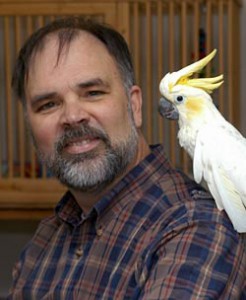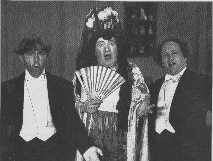Best Friends
Parrot Talk
Special guest turns around problem parrots
By Elizabeth Doyle
 Chase Kimball visited Best Friends to talk with staffers about how to work with pet parrots who bite or won’t stop squawking.
Chase Kimball visited Best Friends to talk with staffers about how to work with pet parrots who bite or won’t stop squawking.
Proof of his expertise? He took a Best Friends parrot, Monroe, into his own rescue program, and this seemingly hopeless squawker and nipper is now so well-behaved, he has a home lined up!
“One important technique is not to give them a drama reward,” says Chase. If a parrot likes to nip, and he finds that nipping you gets a strong reaction, he’ll keep doing it, because it becomes a game. What Chase does is offer them the back of his hand, and invites them to peck at it all they want. “They get no reaction from me, so they stop after a while”.
As for squawking, Chase says that parrots will naturally squawk at dawn and dusk. It’s part of their instinct to wake up the flock at dawn and announce the end of the day. But if a parrot is squawking constantly, he usually needs attention. However, it’s important not to give him that attention at the moment that he’s squawking. That will only encourage it. Wait until he stops, says Chase, and then take him out, hold him in your lap and fuss over him.
Chase runs a parrot rescue and education program called Wasatch Avian Education Society in Utah. Founded in 1994, the group holds open meetings, where they teach people about parrot behavior. In addition, Chase sets up and gives demonstrations at pet supply stores. One of the most important things he teaches is that unlike, for example, cats, “taking care of parrots is counter-intuitive.” You can’t just figure it out by instinct. You need to have education and knowledge before adopting one of these intelligent birds..

